The Lowdown on Bed Skirts
http://decor-ideas.org 07/10/2014 02:13 Decor Ideas
With all the attention we give our duvets, coverlets, quilts and throw pillows, the bed skirt often becomes a forgotten component of our bedding. So we end up with bed skirts that are plain, white and nondescript. What a snooze.
To awaken the look of your bedroom, learn the basics of how to pleat, tailor, ruche and gather your bed skirt fabric. Here’s what to know.
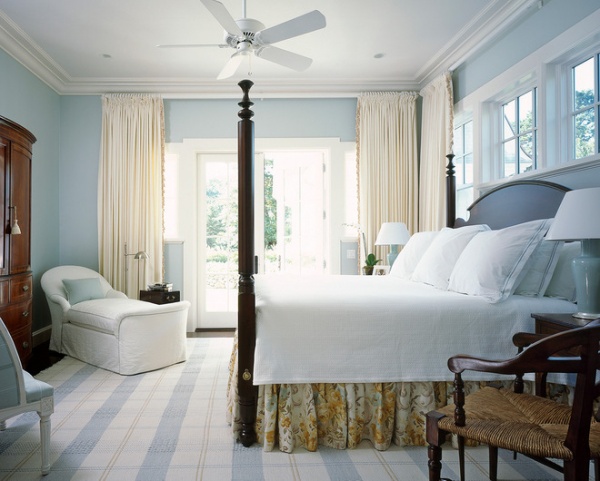
Bed skirts, also called dust ruffles, were created as pragmatic pieces to hide all things unsightly that are associated with a traditional bed (that is, a frame, mattress and box spring). Sandwiched between the mattress and the box spring and cascading to the floor, bed skirts also veil those irksome little dust bunnies that travel like tumbleweeds across hardwood floors. It’s also said that bed skirts were historically used to stop chilly winter drafts from making their way up the underside of the bed.
Pragmatism aside, bed skirts can be a prominent bedding component on their own. They’re composed of a skirt and a deck, also called a platform, which is the flat piece of fabric that lies between the mattress and the box spring. They can be three-sided, meaning the skirt shows on the two long sides and slimmer foot portion of the bed. Or they can be four-sided, with the skirt falling on all sides. Four-sided bed skirts are necessary only if the bed configuration in the room exposes the head of the bed.
Meanwhile, bed skirt styles fall into two general categories: gathered and tailored.
Gathered Bed Skirts
A gathered, or shirred, design is probably the most popular, and it’s what comes to mind when the majority of people picture a bed skirt. Soft and curvilinear, it has fabric loosely bunched and secured to create pretty folds. A gathered bed skirt usually has a fullness of 2½, which means it’s made with fabric 2½ times as wide as the finished panel width. Depending on the design repeat of the fabric, the average gathered king-size bed skirt requires anywhere between 6 and 12 yards of 54-inch-wide fabric.
The corners are split to accommodate for the bed posts. While the gathered design has a feminine look, it’s not overwhelming. It can be used successfully in any bedroom without screaming “girly,” depending on the fabric selected. In the bedroom shown here, the floral bed skirt is the focal point of the bed, contrasting the simple white coverlet.
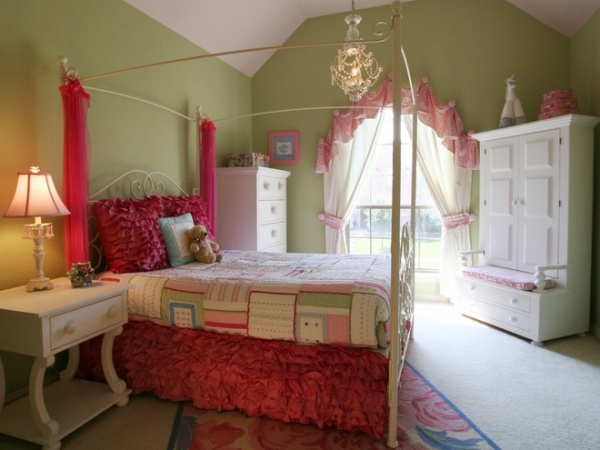
Tiered and gathered. If a single layer of gathering isn’t enough, go for a tiered ruffle look. This look is very frilly and feminine and appropriate for a young girl’s bedroom.
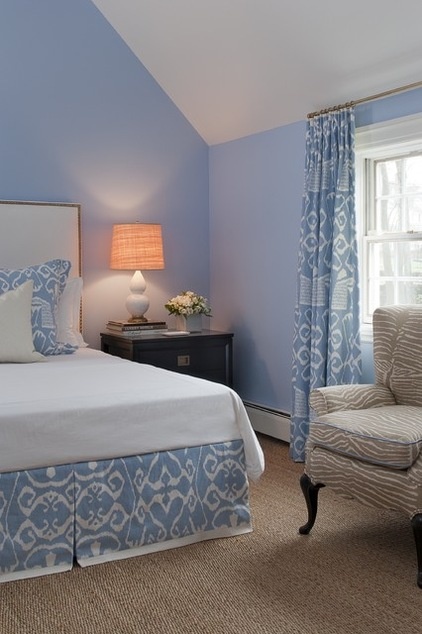
Tailored Bed Skirts
A tailored bed skirt is made from one or more flat panels of fabric. Compared to the gathered type, its flat design offers a cleaner, more streamlined look. Because the fabric pattern isn’t obscured by undulating folds, it’s more prominent. Like the gathered design, tailored skirts also have splits at the corners of the bed, but often also have additional splits added for visual interest, like the one centered on the foot of this tailored bed skirt by Tiffany Eastman Interiors. The intermediate splits also help keep the panels flat by preventing the sides from sagging.
Tailored bed skirts, because they’re flatter, generally require less fabric than the gathered type: 3½ to 7 yards of 54-inch-wide fabric.
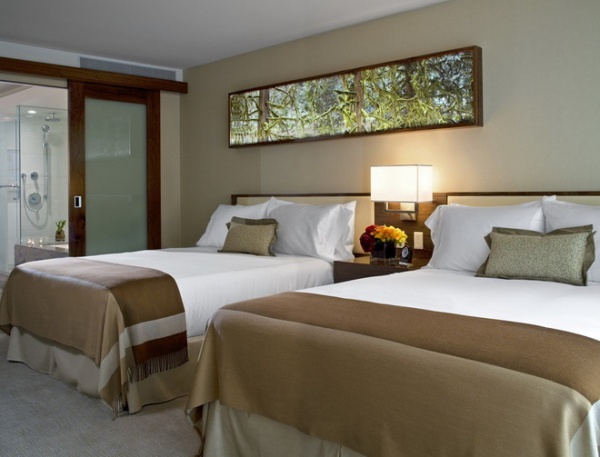
While still considered tailored, this example by designer Claudia Leccacorvi is softer, looser and elegantly understated. It’s a polyester fabric that mimics silk but is easier to maintain.
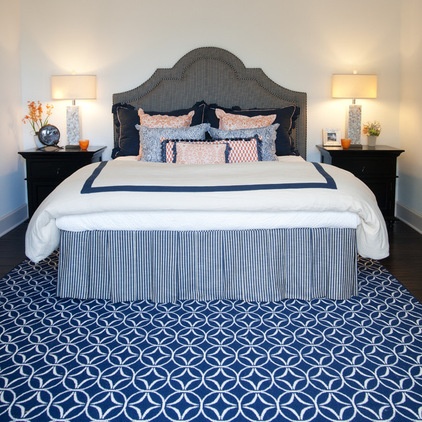
Pleats
Tailored bed skirts are often pleated, and there are numerous pleat styles to choose from — all of which create a drastically different look.
Box pleats. A box pleat is possibly the most popular pleat. It creates a smart, formal look. Box pleats are formed when two equal folds of fabric are folded away from each other in opposite directions, meeting at the back (usually, but not always, at the back center). The pleats are sometimes partially top- or edge-stitched to help them maintain their structure. Box pleats are usually made in a grouped sequence to generate a sensation of rhythm, like in this example by Darci Goodman Design.
Because of the generous folding needed to create box pleats, they require the most fabric of all the tailored pleated styles — 7½ to 15 yards for a king-size bed, depending on the fabric repeat.
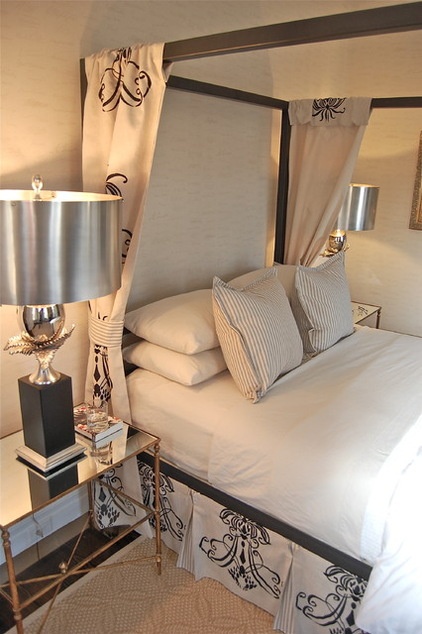
Inverted or reversed box pleats. An inverted, or reversed, box pleat differs from the box pleat in that the folds of fabric are folded toward one another so they meet at the center of the pleat on the front face of the fabric.
This gorgeous bed skirt by Steven Favreau of Favreau Design utilizes an inverted box pleat. Favreau designed and sewed the bed skirt himself, which he divulges is something he doesn’t normally do, “but I got a bee in my bonnet that day,” he says.
Favreau added an additional embellishment at the top to create the diagonal fold detail. The fabric is a heavy cotton, almost as thick as a duck cloth or canvas. Because the fabric was already embroidered, likely by machine, he says it “sealed the deal” in the fabric choice.The contrasting fabric inside the pleat is an off-white and charcoal cotton ticking, which is echoed elsewhere in the room. “In this case I wanted a stronger, more masculine line, so I kept lots of gathered pleating out of the design,” he says. “The bed skirt can set the tone for a room.”
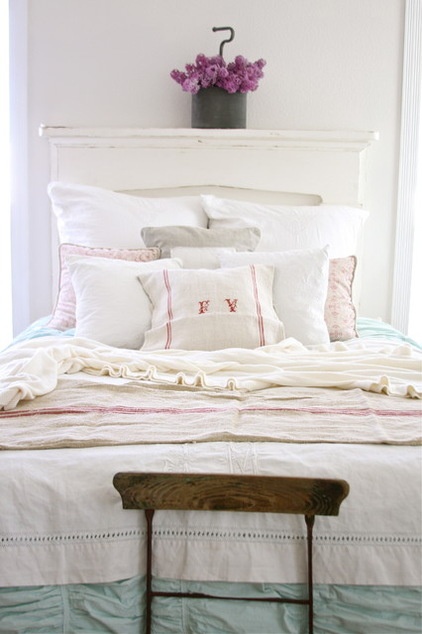
Ruching. Traditionally used to embellish clothing, ruching (pronounced “ROO-shing") is a technique of gathering small pleats of fabric tightly together, usually with a horizontal orientation. The pleats are secured by intermediate stitching, which puckers them slightly and adds a pleasing linear element.
Light and airy, a ruched bed skirt like the one here is especially inviting during the summer.
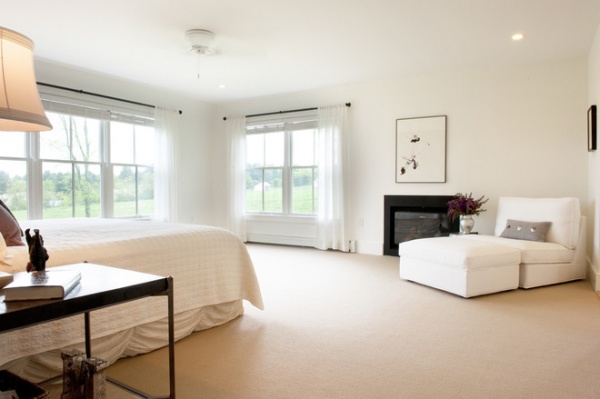
Swags. Swags are similar to ruching, but the pleats are looser and spaced farther apart, allowing them to fall in soft, rounded festoons.
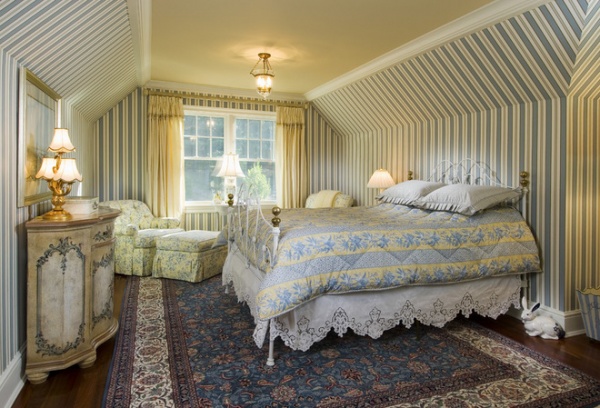
Eyelet. Flat panels of eyelet also make pretty, romantic bed skirts for more traditional bedrooms.
One thing to consider with bed skirts is the drop, or height, of the skirt. The drop is measured from the top of the box spring to the desired length. Most bed skirts just graze the floor; some, however, like the example shown here, stop a few inches above the floor. Most premade commercially sold bed skirts are made with a 14-inch drop. But 16-, 18- and sometimes 21-inch drops can be found, depending on the manufacturer.
Many beds, especially antique frames, require a custom-made bed skirt because of their oddball drop requirements. However, premade bed skirts are typically available only in limited colors, such as solid white and off-white, and don’t offer the style variety available with custom-designed pieces.
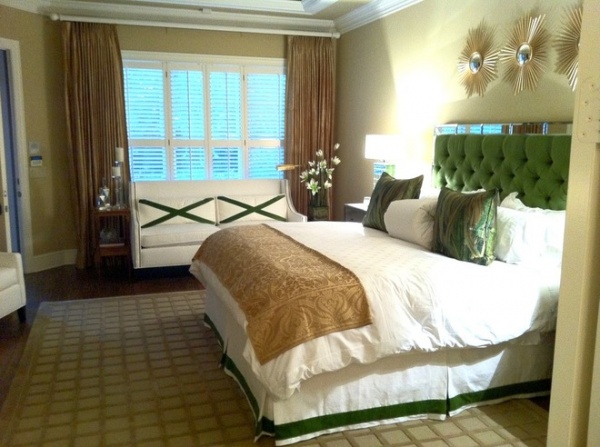
Embellished
Adding a decorative trim at the bottom of a bed skirt draws attention to it by creating a visually weighted, linear focal point. The wide green tape inset on this tailored bed skirt by designer Emily Johnston Larkin ties together the green color in the other bedding components and adds visual structure. Fringes and fabric banding in contrasting colors are other trim alternatives to tape.
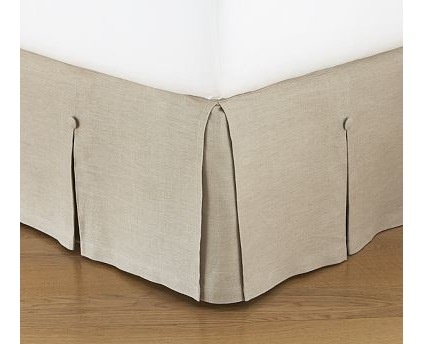
Pleated Button Bed Skirt, 18 Inches, Cal. King, Linen Natural - $149Lastly, if you’re a button lover, consider fabric-covered buttons for a bed skirt embellishment, as seen attached above the inverted box pleats here.
More: Perk Up Your Bedding’s Personality
Related Articles Recommended












